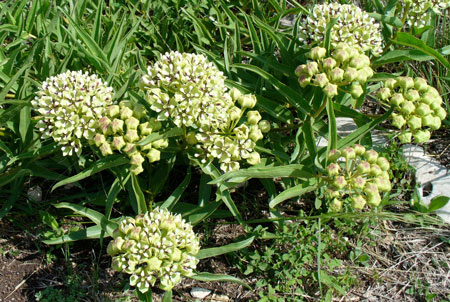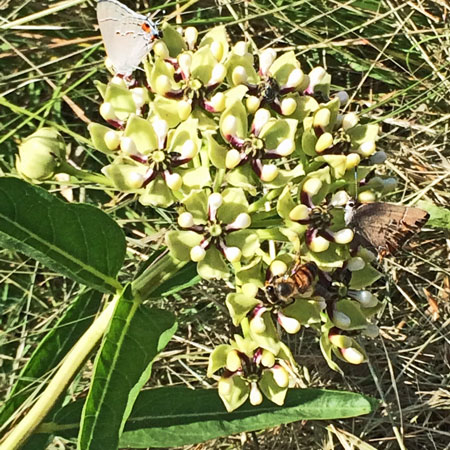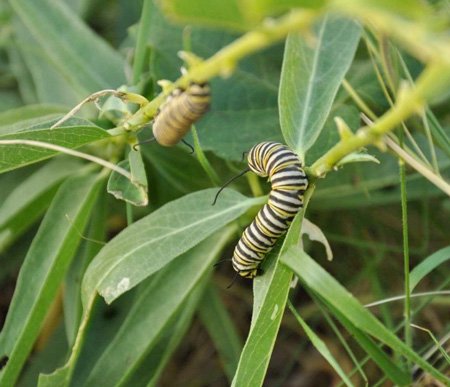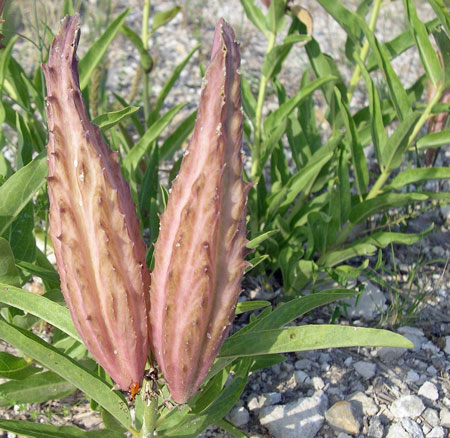
Texas: A Land of Native Milkweed & What You Can Do To Save It
Most of us know about milkweed from either what we have read about it as the favorite food of the Monarch butterfly caterpillars, or by what we have seen for sale (Tropical Milkweed) in our local Wal-Mart, Home Depot and many garden stores and nurseries. But, for those that have any acreage at all (even a couple acres) or for our Texas gardeners and naturalist, the topic goes much deeper.
The migration of the Monarch butterflies could soon become a thing of the past due to this butterfly’s declining population. The cause is a combination of factors that includes illegal logging, wildfires, droughts, and a drastic loss of their crucial native milkweed habitat in the United States. In fact, in 2010, the monarch butterfly was added to the World Wildlife Fund’s Ten Most Threatened Species List. The cited reason: loss of habitat necessary for survival of the monarch migration.
The habitat problem boils down to one thing: native milkweed species that have resided in fields and pastures in our country for centuries have succumbed to the major forces of but land development and unknowing mowing of public and private grassland.
I’ve owned my hill country property in Alamo Springs Ranch for over 10 years. During this time, I’ve spent countless hours “gleefully” mowing the grass in the proximity of our cottage. However, with the grass, I also mowed down many weird-looking green plants with pointy leaves and white flowers. It wasn’t until this year that I realized these plants were a specie of native Texas milkweed called Antelope Horn milkweed (See photos).
During the most recent episode of rain with the grasses on our property over a foot tall, I started an effort to flag many of the Antelope Horn milkweed so that they could be avoided (as best a possible) during mowing.
While I was placing the flags in the area of these milkweed plants, I took a close look at the blossoms. They are five-pointed flowers with light-green to white petals tightly packed into clusters of twenty or more flowers. Each flower has five round, white coronas that stand above the petals on small horn-like stems.

Looking closer (see above photo), I saw something that really surprised me: the number and diversity of insects species that these milkweed flowers attract and sustain. Not only were there several species of butterfly on the milkweed flowers, but there were honey bees, small beetles and black ants (not fire ants!). After doing some research, I found out that these native milkweed are a haven for many of our native pollinators that are in distress right now, too.
I encourage you to take a closer look at the grassland on your property before your next mowing. Look for, identify and flag as many as you can to save them from the mower. Photos of several of the other types of native milkweed in the Texas hill country are available online on the Native Plant Society of Texas website at: http://npsot.org/wp/story/2012/2235/. If you find any of these, please flag them too and don’t mow them down.
The horticultural community in Texas encourages you to sustain the native milkweed population rather than planting the Wall-Mart and Home Depot variety of tropical milkweed (with its yellow, orange and red flowers). The tropical milkweed will actually keep the Monarchs from continuing their fall migration to Mexico unless you cut it down as fall approaches. If tropical milkweed is available locally, the Monarchs will tend to stay here where they succumb to the cold, freezing weather and a local and toxic fungus. The native milkweeds are better since they naturally die-back in the fall. This encourages the Monarchs to continue on their journey to Mexico. But, don’t worry, they will come back in the spring on their reverse migration.
You can also help promote native milkweed by gathering seeds from some of the seedpods (see photo above). Once you gather the seeds, plant them to start a garden of native milkweed or distribute in an unmowed area on your property to sustain the Monarchs (see below) and many other Texas pollinators. Further details on propagation of native milkweed via seeds is available at http://npsot.org/wp/story/2014/5885/.


